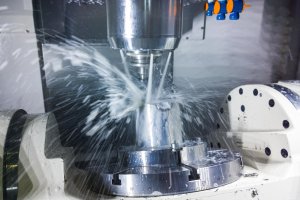As a manufacturer of prototype machining, Want.Net is dedicated to delivering superior results with our advanced CNC equipment and expertise in machining workpieces with complex structures. In order to ensure the utmost efficiency and effectiveness in our machining processes, our engineers meticulously follow a set of principles when developing machining process routes. These principles not only enhance the quality of our products but also streamline the production workflow.
Principles of Machining Process Route Reference
1. Prioritize Processing the Reference Surface
Before commencing the machining process, it is vital to process the parts’ positioning reference surface. By doing so, we establish a benchmark for subsequent procedures, enabling seamless transitions between stages. This early step accelerates the overall machining process, allowing us to deliver precision-engineered components promptly.
2. Divide the Processing into Stages
To meet the high-quality requirements of our clients, we divide surfaces with stringent processing criteria into distinct stages: roughing, semi-finishing, and finishing. Each stage plays a pivotal role in rendering superior processing outcomes. This division facilitates meticulous quality control, ensures efficient equipment utilization, simplifies heat treatment arrangements, and enables the timely detection of any raw material defects. By adhering to this principle, we consistently deliver workpieces of exceptional quality.
3. Machine Flat Surfaces before Holes
For components such as housing parts, brackets, and connecting rods, we prioritize machining flat surfaces before drilling holes. This approach allows us to align the holes accurately with the flat surfaces, guaranteeing precise positional accuracy. Furthermore, this strategic sequencing optimizes the machining of holes on flat surfaces, providing convenience and accuracy during subsequent processes.
4. Allocate Finishing Processes to the Last Stage
When planning the machining process route, we allocate the finishing processes, including grinding, honing, fine grinding, and rolling, to the final stage. This meticulous arrangement ensures that delicate surface finishes, with roughness below Ra 0.8, remain intact. We take precautions to prevent any damage to the workpiece surface caused by minor collisions. By avoiding direct contact with the workpiece during subsequent processes and assembly, we uphold the highest standards of quality and surface integrity.
Considerations for Developing a Machining Process Route
1. Separation of Roughing and Finishing
During rough machining, the cutting tool exerts significant force on the workpiece, generating heat that can cause surface hardening. This phenomenon introduces internal stress to the workpiece, which can compromise dimensional accuracy. To overcome this challenge, we separate roughing and finishing operations. In cases where precision is crucial, we employ additional measures such as low-temperature annealing or aging processes after rough machining but before finishing. This strategic approach ensures the elimination of internal stress and guarantees dimensional accuracy for custom machined parts with high precision requirements.
2. Selecting Equipment Appropriately
To maximize efficiency and precision, we carefully select the appropriate equipment for each stage of the machining process. During roughing, where material removal is the primary focus, we utilize high-power machine tools that may have slightly lower accuracy. In contrast, for the finishing process, where precision is paramount, we employ high-precision machine tools. This differentiation allows us to optimize equipment utilization, achieving superior results while extending the service life of our precision tools.
3. Incorporating Heat Treatment Processes
Strategic placement of heat treatment processes enhances the overall quality of our machined parts. Consider the following guidelines:
- Annealing, Normalizing, and Tempering: Performing these treatments before machining enhances the metal’s cutting performance, ensuring efficient material removal during subsequent operations.
- Aging Treatment and Tempering: By applying these treatments after rough machining but before finishing, we effectively eliminate internal stress in the workpiece. This step contributes to dimensional accuracy and prevents potential distortions during the final stages of the process.
- Carburizing, Quenching, and Tempering: For parts requiring enhanced mechanical properties, we employ these treatments after machining. They improve the strength and durability of the components, ensuring they meet the required specifications. In cases where significant workpiece deformation occurs during heat treatment, an additional final machining process may be necessary to restore the desired dimensions.
Summary
When developing the machining process routes for different parts, Want.Net takes into account various factors, such as production requirements, equipment selection, clamping and gauging techniques, raw material blanks, and the technical expertise of our workers. By meticulously adhering to the principles outlined above, we optimize our machining routes to deliver high-quality, precision-engineered components that cater to diverse manufacturing needs. Our commitment to excellence and efficiency sets us apart in the industry, enabling us to fulfill the most demanding CNC machining requirements with unwavering precision and quality assurance.
Recommended Reads:
- Logo & Character Processing: How to Choose for Your Prototype
- Using the Right Milling Technique: Down Milling vs. Back Milling
- 3 Effective Strategies for Cost Optimization in CNC Prototyping
- Working with CNC Machining Tolerances: Achieving Precision and Accuracy
- A Comprehensive Guide to CNC Milling of Curved Surfaces
Related Posts
- Mastering the Bead Blasting Process in CNC Machining(milling machining Mandel)
Bead blasting is a common finishing process employed within the realm of Computer Numeric Control (CNC) machining. It refers to the procedure used to clean or finish surfaces using spherical…
- Decoding the Process of CNC Bead Blasting(milling machining Ted)
Bead blasting is an essential subset and technique used in Computer Numerical Control (CNC) machining. It involves the process of removing surface deposits by applying fine glass beads under high…
- Unraveling Bead Blasting Process in CNC Machining(cnc machining china Sid)
Bead blasting is a significant process within the realm of Computer Numerical Control (CNC) machining, providing numerous industries with quality finishes for various types of products. From aircraft parts to…








